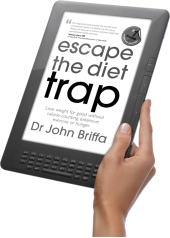The side-effects of statin drugs are well-recognised, and include muscle pain, fatigue, mental symptoms, kidney damage or liver damage. Some doctors and researchers have decided to change the nomenclature on these side-effects by referring to people who have them as ‘statin intolerant’. I may be wrong, but this seems to me to be a way to have the side-effects and very real hazards of statins to sound less bad than they are.
Anyhow, statin side effects are said to affect about 5-10 per cent of people from the clinical studies where individuals have been treated, say, with a statin or a placebo. Except that in many of those studies there was a ‘run-in’ period where all individuals who may end up entering the study are given. Those who are ‘statin intolerant’ are then identified and removed. This, of course, helps assure that statin side-effects will be low in the actual study and that the drugs are safer than they actually are. If we look at populations of people taking statins (who have not been screened for ‘statin intolerance’), statin side effects appear to affect about 20 per cent of people taking them.
I was interested to read the summary of a paper based on the experiences of a major cardiological group based in North America (the Cleveland Clinic http://my.clevelandclinic.org/default.aspx). The Cleveland Clinic has long offered a service for ‘statin intolerant’ individuals. It seems the service aims to get people back on their statins. This could mean, for example, a different statin, or giving the statin every other day (rather than daily).
The paper tells us that of 1,605 patients whose medical records they assessed, 72.5 per cent of them were able to go back to taking statins. The report tells how those who took alternate day dosing saw smaller reductions in LDL-cholesterol compared to those who took it every day, but still had levels lower than individuals who were off their statins for good.
I’ll be frank and say when I read reports such as these, my eyes glaze over a bit and sometimes I feel the will to live ebbing away. And that’s because the taking of statins and the impact that this has on people’s cholesterol levels is quite irrelevant. What we want to know is what the impact of all this is on health.
Health can be measured in many ways, but the supposed point of taking statins is to reduce the risk of ‘clinical’ events such as heart attacks. The single best way to gauge the overall impact of an intervention is to assess the impact it has on risk of death. Risk of death is 100 per cent for us all, eventually, of course. But if we follow people over a finite period of time, we can compare the number of people taking statins who die with the number of deaths in individuals not taking statins.
In this study, the researchers made this assessment over an 8-year period. Death rates over this time were not statistically lower in those taking statins compared to those who were not.
I think the authors of this study should be commended for measuring and disclosing this finding because, to be frank, it in no way justifies their attempts to get people back on their statins. It might be this last fact that caused them to describe their findings like this:
There was a trend toward a decrease in all-cause mortality at 8 years for patients on daily and intermittent statin dosing compared with those who discontinued statin (P = .08).
If you weren’t wary, you’d probably read take that as an indication that there were benefits for statin takers in terms of death risk. But, there was not. Make no mistake about it; terms like: ‘there was a trend toward’ are weasel words.
References:
1. Mampuya WM, et al. Treatment strategies in patients with statin intolerance: The Cleveland Clinic experience. Am Heart J 2013;166(3):597-603
[hr]
[box style=”rounded” border=”full”]
Dr John Briffa’s best-selling ESCAPE THE DIET TRAP – lose weight without calorie-counting, extensive exercise or hunger is available in the UK and US
“This magnificent book provides the scientific basis and practical solutions to liberate you from yo-yo dieting and allow you to achieve sustained weight loss and enhanced health with ease.”
William Davis MD – #1 New York Times bestselling author of Wheat Belly
To read some of the dozens of 5-star reviews for this book [button link=”http://www.drbriffa.com/amazon-reviews-for-escape-the-diet-trap/” color=”silver” text=”dark” window=”yes”]click here[/button]
To buy a paperback copy of the book from amazon.co.uk [button link=”http://www.amazon.co.uk/Escape-Diet-Trap-John-Briffa/dp/0007447760/ref=tmm_pap_title_0?ie=UTF8&qid=1324815918&sr=1-1″ color=”orange” window=”yes”]click here[/button]
To buy a kindle version of the book from amazon.co.uk [button link=”http://www.amazon.co.uk/Escape-the-Diet-Trap-ebook/dp/B005ODY0RW/ref=tmm_kin_title_0?ie=UTF8&qid=1324815918&sr=1-1″ color=”orange” window=”yes”]click here[/button]

To buy a print copy of the book from amazon.com [button link=”http://www.amazon.com/Escape-Diet-Trap-calorie-counting-extensive/dp/0957581602/” color=”orange” window=”yes”]click here[/button]

To buy the kindle version of the book from amazon.com [button link=”http://www.amazon.com/dp/B00BLQ40QM” color=”orange” window=”yes”]click here[/button]
[/box]